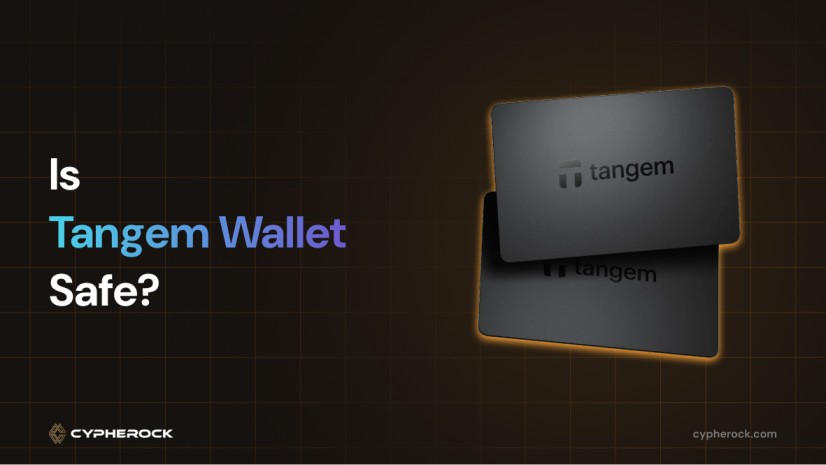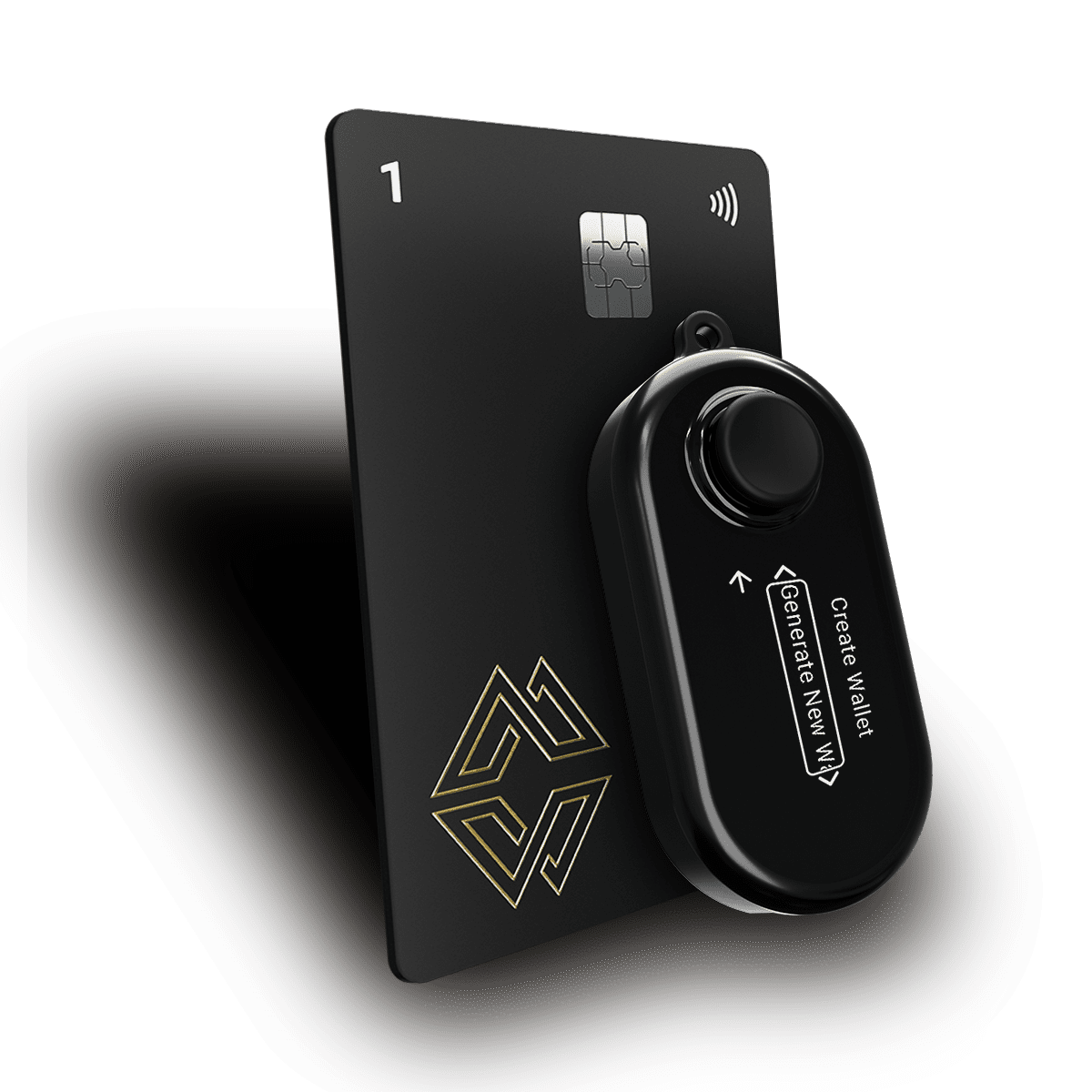

With crypto hacks and wallet scams in the headlines almost every week, everyone wants a better way to protect their coins. The Tangem wallet stands out with its card-like design and “no-seed-phrase” promise. But is Tangem safe enough for your Bitcoin, Ethereum, or altcoins? Or are there better options like Cypherock X1? Here’s a full review with answers for 2025.
Most hardware wallets are clunky USB sticks with small screens and buttons. Tangem takes a different approach. It’s about the size of a credit card and feels more like a tap-to-pay bank card than a tech gadget.
Tangem uses NFC (Near-Field Communication), the same technology as contactless payment cards. To use it, you tap the card to your phone with the Tangem app installed. No cables, no batteries, and no writing down a recovery phrase unless you want to.
This approach makes Tangem super easy for beginners. There’s no paper backup to hide. The process is as simple as opening the app, tapping your card, and setting a password or biometric. Many users love this for its simplicity and portability.
Chip Security:
Tangem cards use a Samsung EAL6+ secure element—the same high rating used for passports and bank cards. The private key is generated directly inside the card and never leaves it. There’s no way for hackers or even Tangem itself to see your private key.
No Recovery Phrase by Default:
Most wallets use a 12- or 24-word seed phrase for backup. Tangem doesn’t force you to use one. Instead, you can order a three-card pack and keep backup cards in different places. Lose one card? No problem. Lose all cards? That’s a problem.
Random Private Key Generation:
The key is created inside the card, using a true random number generator from the chip’s physical sensors. It never touches your phone, computer, or the internet.
Open-Source App:
The Tangem mobile app is open source and on GitHub, so security experts can inspect it for hidden flaws or backdoors.
Independent Audits:
Tangem’s firmware has been independently audited—first by Kudelski Security and again by Riscure in 2023. The firmware can’t be updated, so there’s no risk of a bad update bricking your wallet or exposing your coins.
Offline Signing:
Even though you use your phone, the signing always happens offline. NFC keeps your keys separate from online threats.
While Tangem does a lot right, it’s not perfect. Here are some real risks to be aware of:
If you lose all your Tangem cards and don’t set up the optional recovery phrase, your crypto is gone forever. There’s no “forgot password” option, no customer support magic.
Cypherock X1 Pro Tip:
Cypherock X1 divides your private key into five pieces. As long as you have any two of the five (the vault and a card, or two cards), you can recover your funds—even if three pieces are lost.
Tangem doesn’t have a screen or physical button. You trust the app to show you the transaction details, but if your phone gets hacked or malware changes the info, you might sign a dangerous transaction without realizing.
Why It Matters:
Hackers have built viruses that can change wallet addresses in apps—sending your crypto to a thief. Wallets with an on-device display, like Cypherock X1, let you see and approve the actual address and amount on a tamper-proof screen.
With Tangem, you must trust your phone and the app for transaction info. There’s no way to independently confirm what you’re signing. This is called “blind signing” and it’s a real risk. If malware or a hacker takes over your app or phone, they can trick you.
Cypherock’s Solution:
Cypherock X1 has an OLED display and physical joystick, so you always check transaction details offline—nothing sneaky can happen without your approval.
While Tangem’s app is open source, the firmware inside the cards is not. That means you have to trust their audits and the company, rather than being able to check everything yourself.
Cypherock Is Open:
Cypherock’s wallet firmware is open source, audited by KeyLabs, and reproducible—meaning anyone can verify the code matches what runs on the device.
Tangem only works with NFC-enabled smartphones (iOS and Android). There’s no desktop or browser support.
Cypherock’s Flexibility:
Cypherock X1 works with Windows, Mac, Linux, and with mobile apps too.
Tangem claims you can always recover your wallet by viewing the seed phrase in the app if you choose. But if you rely on the default card-only system and lose your cards, you’re locked out. If you import a seed phrase, you must trust the app and your phone’s security during setup.
Cypherock X1 Fixes This:
Cypherock never shows your seed phrase, and you can view or export it securely anytime on the X1 Vault—no trust in any single app, card, or device.
Tangem fixed a bug in late 2024 that accidentally exposed private keys through email logs. No funds were lost, but it proves that any wallet—even with great audits—needs ongoing vigilance.
With Cypherock X1, private keys are never exposed at any step, and the wallet’s decentralized architecture means no single device or attack can compromise everything.
Tangem:
Cypherock X1:
Tangem is much safer than keeping crypto on an exchange or software wallet. For most users, it’s a huge upgrade in security and convenience. But if you want maximum protection, clear transaction signing, and no trust in any single device, Cypherock X1 is a smarter choice.

Want to secure your crypto for the long run?
Check out Cypherock X1 for a modern, truly decentralized hardware wallet experience.
Connect with us:
Twitter: @CypherockWallet
Telegram: Join the Community
